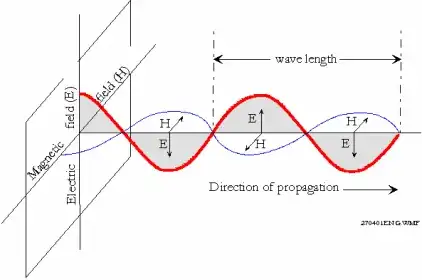We can represent a monochromatic electromagnetic wave by one of its fields, the $\vec E$ or $\vec B$ field (or $\vec H$ in the case of the diagram further down). For example, we can write $$\vec E (\vec r, t) = \vec E_0 e^{i(\vec k \cdot \vec r - \omega t)}$$ where the relevant part for this question is $\omega$, the angular velocity. When the frequency of a wave approaches 0, the angular velocity also approaches zero ($\omega = 2\pi f$, so $\omega$ and $f$ only differ by a factor of $2\pi$).

For an electromagnetic wave, the wavenumber follows $k = \frac{2\pi}{\lambda}$. From this you can see that with increasing wavelength $\lambda$, $k$ approaches zero as well.
The exponent in the exponential function therefore tends to zero with decreasing frequency and increasing wavelength: $e^0 = 1$.
We are left with $$\vec E (\vec r, t) = \vec E_0$$ which is the equation for a static electric field $\vec E_0$ which does not vary in time or position.
We are able to detect such a field for example by probing it with a test charge or measuring a voltage between two points.
The same derivation can be done with the magnetic field $$\vec B = \vec B_0 e^{i(\vec k \cdot \vec r - \omega t)}$$ and yields the same result (static magnetic field).
As for the question about color, color is merely a definition for specific wavelengths in the visible region of the EM spectrum. Since we also don't assign a color to x-rays or microwaves, the concept of color also does not apply to such a wave.
